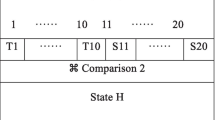Abstract
In this paper we explore what sacrifices you are morally required to make to save a child who is about to die in front of you. It has been argued that you would have very demanding duties to save such a child (or any adult who is in similar circumstance through no fault of their own, for that matter), and some examples have been presented to make this claim seem intuitively correct. Against this, we argue that you do not in general have a moral requirement to bear more than moderate cost to save even a child who is just in front of you. Moreover, we explain why you have a much more demanding moral requirement in certain cases by appealing to the notions of undue risk and cost sharing.
Similar content being viewed by others
Notes
Child Labour is defined by the ILO as “work that is harmful to children’s physical and mental development.” See http://www.ilo.org/ipec/Campaignandadvocacy/Youthinaction/C182-Youth-orientated/C182Youth_Background/lang-en/index.htm. Accessed 7 September, 2011.
Just how high the required cost would be depends on the content of the special duties.
That is, provided that Singer’s empirical assumptions about the potential of assistance to alleviate poverty are sound.
A similar point is made by Arneson (Arneson 2004, 37) who writes “The mere fact of non-compliance by some does not automatically set an upper limit on the amount of sacrifice it is reasonable to demand of others who can provide cost-effective aid.”
Compare Scanlon: “If you are presented with a situation in which you can prevent something very bad from happening, or alleviate someone’s dire plight, by making only a slight (or even moderate) sacrifice, then it would be wrong not to do so” (Scanlon 1998, 224).
Unger writes: “Our intuitions on very many cases, both hypothetical and even actual, do nothing toward reflecting these Values, as they’re produced by powerfully Distortional Mental Tendencies that prevent us from responding in line with the Values”. (Unger 1996, 173–5)
As for SAP2: Bob’s savings for retirement could be regarded as morally significant, and that is because it is more than required, more than moderate.
Why does he have no insurance? Well, assume that if he had, the company would not cover damages caused by natural incidents, or that it would not cover them since Bob himself directed the avalanche towards his own new house.
References
Arneson R (2004) Moral limits on the demands of beneficence? In: Chatterjee DK (ed) The ethics of assistance: morality and the distant needy. Cambridge University Press, Cambridge, pp 33–58
Chappell TD (2009) The moral problem of demandingness. Palgrave, Basingstoke
Cullity G (2004) The moral demands of affluence. Clarendon, Oxford
Food and Agriculture Organization (2009) 1.02 billion people hungry. Malnutrition. News release, 19 June 2009, www.fao.org/news/story/0/item/20568/icode/en. Accessed 6 October 2010
International Energy Agency (2011) World energy outlook: access to energy. Electricity 2008. www.iea.org/weo/electricity.asp. Accessed 7 September, 2011
Miller D (2001) Distributing responsibilities. J Polit Philos 9:453–471
Miller R (2004) Beneficence, duty and distance. Philos Public Aff 32(4):357–383
Murphy L (2000) Moral demands in nonideal theory. Oxford University Press, Oxford
Scanlon T (1998) What we owe to each other. Belknap Press of Harvard University Press, Cambridge
Scheffler S (1982) The rejection of consequentialism. Oxford University Press, Oxford
Schmidtz D (2000) Islands in a sea of obligation. Law Philos 19:683–705
Singer P (1972) Famine, affluence, and morality. Philos Public Aff 1:229–243
Singer P (1993) Practical ethics. Cambridge University Press, Cambridge
Singer P (2007) Global poverty, how demanding are our obligations? Lecture at The Massachusetts Institute of Technology, September 21, 2007. http://mitworld.mit.edu/video/487
Singer P (2009) The life you can save. Text Publishing, Melbourne
Unger P (1996) Living high and letting die. Oxford University Press, New York
United Nations Children’s Fund (UNICEF) (2006) Child labour, http://www.unicef.org/protection/files/Child_Labour.pdf. Accessed 7 September, 2011
Wenar L (2003) What we owe to distant others. Philos Polit Econ 2(3):283–304
World Health Organization and UNICEF (2010) Progress on sanitation and drinking water: 2010 update. Water and Sanitation. WHO, Geneva, pp. 6–7, www.who.int/water_sanitation_health/publications/9789241563956/en/index.html. Accessed 7 September, 2011.
Acknowledgments
An earlier version of this article was presented as seminars at the Australian National University and Charles Sturt University. We are grateful for comments received from audiences on those occasions, and especially to Stephanie Collins, Bashshar Haydar, Holly Lawford-Smith, Seth Lazar, Alejandra Mancilla, Leif Wenar, Luara Ferracioli and Ole Koksvik for written comments on earlier drafts. This article is part of a larger project on responsibilities to address poverty that has received financial support from the Australian Research Council and the Research Council of Norway.
Author information
Authors and Affiliations
Corresponding author
Rights and permissions
About this article
Cite this article
Barry, C., Øverland, G. How Much for the Child?. Ethic Theory Moral Prac 16, 189–204 (2013). https://doi.org/10.1007/s10677-011-9325-4
Accepted:
Published:
Issue Date:
DOI: https://doi.org/10.1007/s10677-011-9325-4



